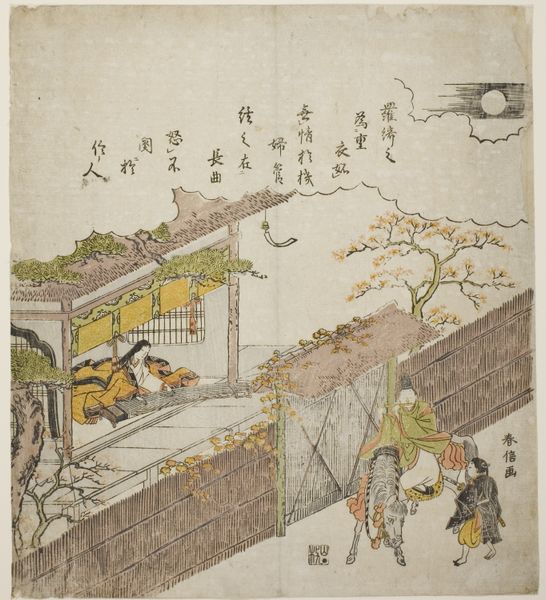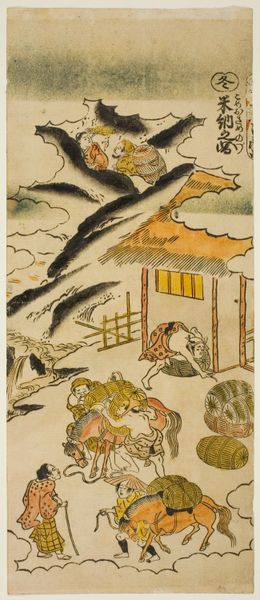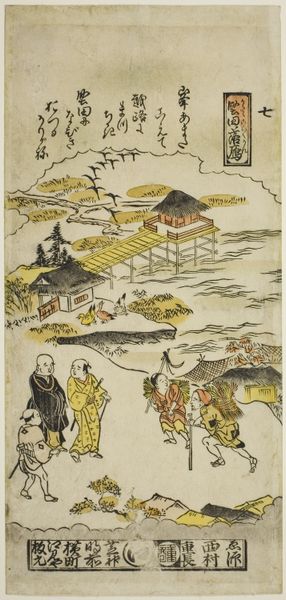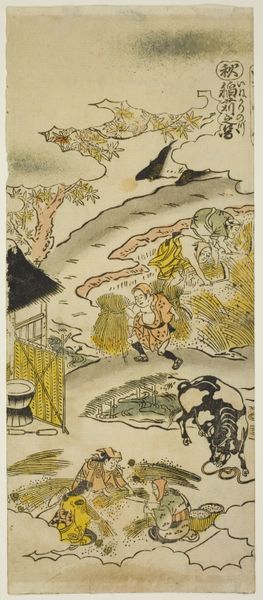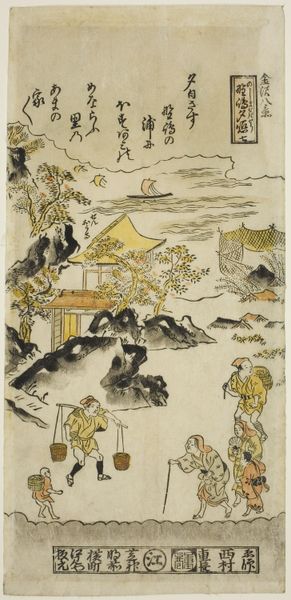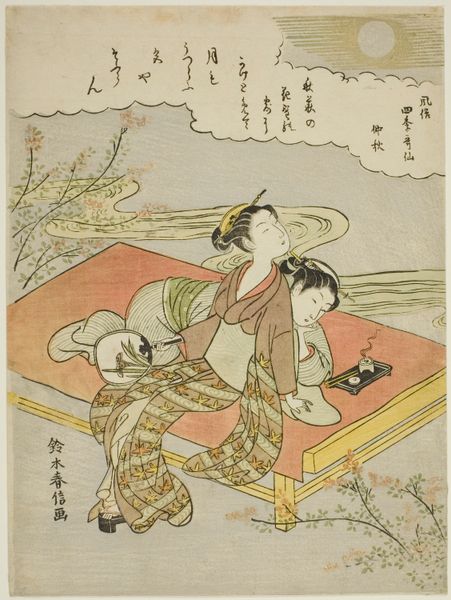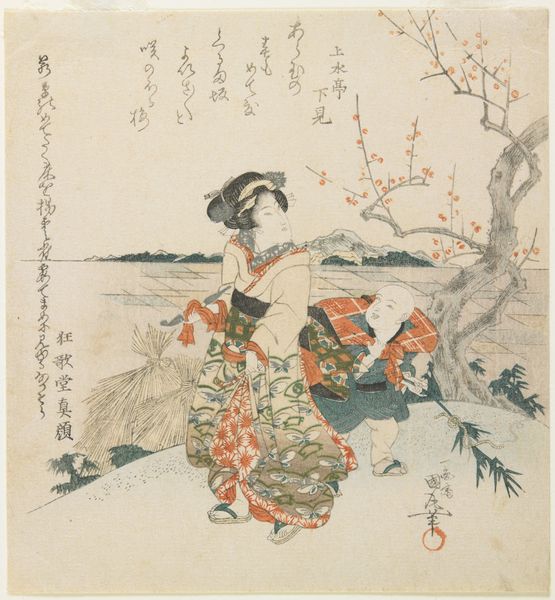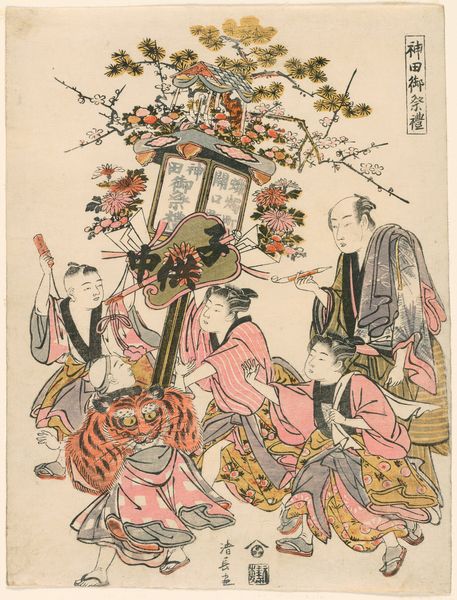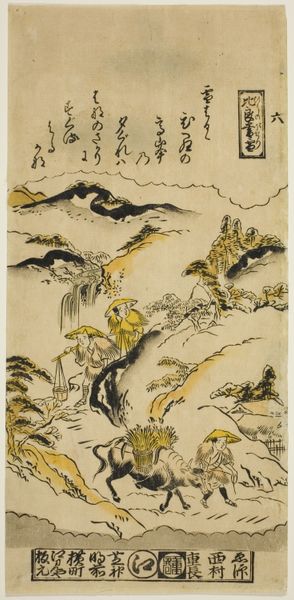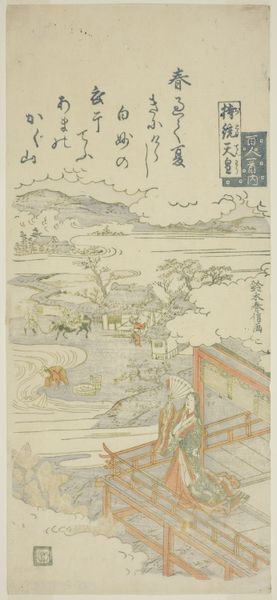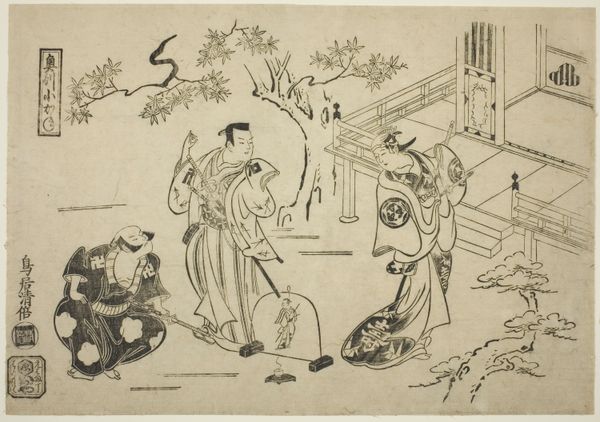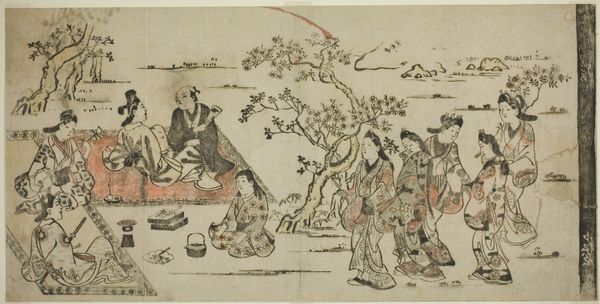
Spring: Soaking Rice Grains (Haru: tanehitashi no zu), No. 1 from the series "The Four Seasons of Farmers (Shiki no hyakusho)" c. 1730s
0:00
0:00
print, woodblock-print
#
narrative-art
#
ink painting
# print
#
asian-art
#
landscape
#
ukiyo-e
#
japan
#
figuration
#
woodblock-print
Dimensions: 12 1/8 × 5 1/8 in.
Copyright: Public Domain
Curator: Before us is “Spring: Soaking Rice Grains,” number one from the series "The Four Seasons of Farmers," created around the 1730s by Torii Kiyomasu II. It’s a Japanese woodblock print, a beautiful example of ukiyo-e. Editor: It feels vibrant despite the muted palette. The composition draws my eye immediately to the activity in the foreground, all those swirling lines of water! Curator: The print depicts farmers preparing for the rice planting season. This work gives us a glimpse into the lives of those who worked the land and the cyclical nature of their existence within their society. Editor: Look how the artist uses line and color to differentiate the elements—the solidity of the land, the transparency of the water, and the human figures posed with dynamic intention. The lines are so sharp and refined. Curator: Yes, and there is a hierarchy at play in this rural setting, represented in their labors. A man struggles with a heavy basket while another casually casts grain into the stream, the river carries its gifts down to feed the villagers' bellies. It prompts questions about equity, even in nature's abundance. How can we distribute labor to address inequitable situations and access to life's basic sustenance? Editor: Semiotically, water represents renewal, life-giving force—a core element within its environment. I find myself moved by how the artist suggests movement, a temporal event that happens to represent this period of Spring; through color, the artist provides direction for interpreting form. Curator: Precisely. And this narrative is key. Woodblock prints like these weren't just decorative; they were visual stories, reflecting the social and economic realities of the Edo period. What do the faces of the community present about the state of economic parity between neighbors? Editor: It’s the clever arrangement of elements, the relationship between the organic and man-made, that create a perfect visual harmony. The color contributes to the mood as well, with each tone providing its own weight across planes of light. Curator: Understanding its role as both art object and historical document gives the artwork a new kind of resonance today, because it acts as a touchstone across periods. Editor: Indeed. Viewing the piece closely, I am particularly interested in the way the artist represents nature to illustrate and exemplify spring's first promise through process.
Comments
No comments
Be the first to comment and join the conversation on the ultimate creative platform.
